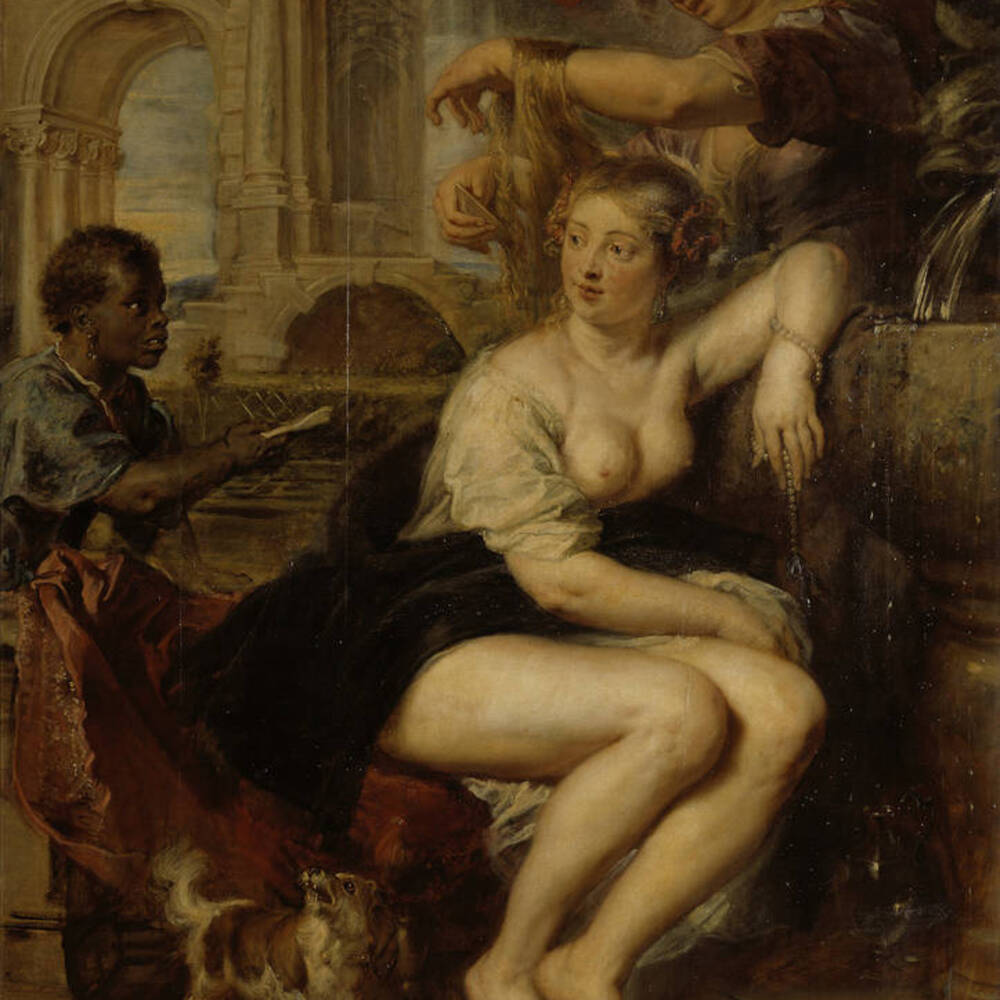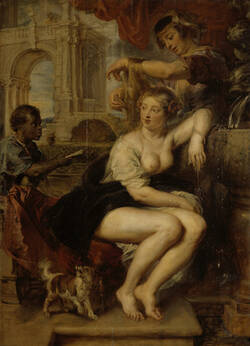On the basis of the Old Testament narrative, Rubens depicts the beautiful Bathsheba bathing in the courtyard of King David’s palace. A page approaching from the left brings David’s letter to Bathseba. Having fallen in love with Bathsheba, he summoned her to him and she became pregnant. In an effort to conceal his sin, he sent her husband Uriah to the front line of battle, where he died. Rubens was presumably inspired to create this late work by the beauty of his second wife, the young Hélène Fourment.
Further Media
The Old Testament tells how one day King David saw Bathsheba bathing in her garden and fell desperately in love with her. Bathsheba was the wife of King David’s general Uriah – but with Uriah away on a military campaign, David took the chance to invite Bathsheba to his palace. Their night of love, though, had one very definite consequence – Bathsheba became pregnant. Initially, David tried to conceal his adultery by calling Uriah back to the palace, hoping Uriah would sleep with Bathsheba – and then believe the child was his own. But since Uriah was still on active service, he insisted on staying in the army camp with his soldiers. So David sent Uriah to the front lines with a letter for his commander. That letter sealed Uriah's fate:
‘Put Uriah in the forefront of the fiercest fighting, then draw back from him so he may be struck down and die.’
As David hoped, Uriah was killed in the battle. King David was then free to take Bathsheba as his eighth wife. But God was so displeased with David’s evil deed that He punished him by letting their child die. Later, Bathsheba and David had a second child – the future King Solomon.
- Location & Dating
- c. 1635
- Material & Technique
- Oil on peak panel
- Dimensions
- 175 x 126 cm
- Museum
- Gemäldegalerie Alte Meister
- Inventory number
- Gal.-Nr. 965

